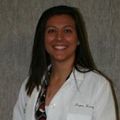Assessment of the Aerodigestive System in Rodents
-
Megan Haney, DVM
Laboratory Animal Resident/Postdoctoral Fellow, University of Missouri
The aerodigestive tract is a combination of the respiratory tract and the upper portion of the digestive tract. As these two organ systems share many of the necessary structures used for swallowing, vocalizing, and breathing, they are often studied together as a unit. The lips, tongue, nose, pharynx, larynx, trachea, and esophagus are all examples of structures found within the aerodigestive tract. When there is dysfunction or disease in one system, it often affects the other. As such, dysfunction of the aerodigestive system occurs with a wide range of disorders, including GI motility disorders, reflux disorders, neoplasia, and neurologic diseases such as stroke, Parkinson’s disease, and amyotrophic lateral sclerosis. Symptoms of aerodigestive dysfunction include dysphagia (difficulty swallowing), lung infections due to aspiration, difficulty breathing, hoarseness, halitosis, and/or malnutrition to name a few.
In order to effectively understand aerodigestive pathology and examine potential therapeutic mechanisms for use in human patients, it is often essential to utilize animal models. Though rodents are commonly used in research, their small size, particularly concerning mice, create various challenges when investigating the complex aerodigestive system. This presentation will discuss several minimally invasive imaging modalities performed in awake or anesthetized rodent models to investigate aerodigestive tract dysfunction and efficacy of various treatments. Specifically, this presentation will cover videofluoroscopic swallow studies and endoscopy of the oral cavity, pharynx, larynx, and/or esophagus. These imaging techniques have been adapted from the standard testing performed in human patients used to diagnose aerodigestive dysfunction and assess treatment efficacy over time. Thus, these imagine modalities serve to increase the translational potential of research involving the upper airway or digestive tract.
Assessment of the Aerodigestive System in Rodents
Please update your information
Certificate of Participation
DOWNLOAD CERTIFICATE






